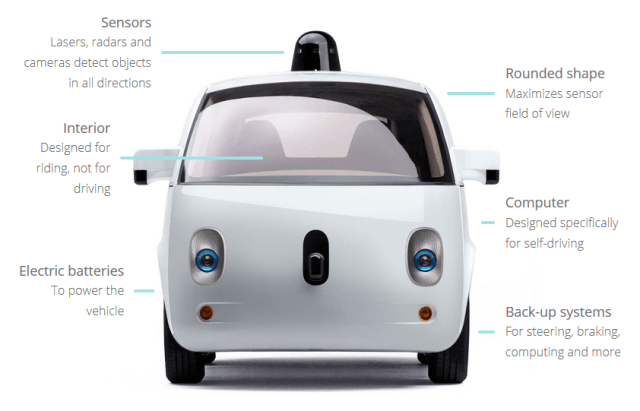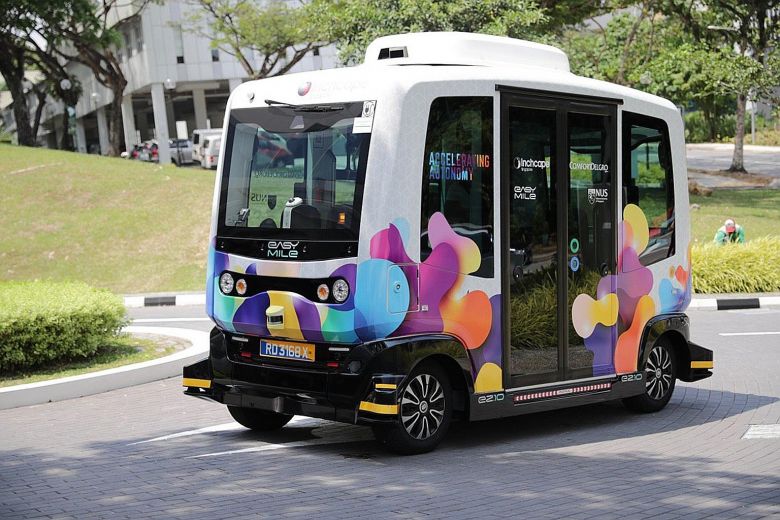Driverless Cars
by Gabrielle, Junzhe and Cayden
26 Aug 2019
We have probably all heard of driverless cars before and might feel that this is old news. But we seldom encounter or use them in their daily lives. Hence, one may think, do driverless cars really not have drivers? Because if so, how exactly do these cars work?
 ###What is a driverless car?
A driverless car, also known as a self-driving car, autonomous car, or robotic car, is a vehicle capable of sensing its environment and moving safely with little or no human input.
###What is a driverless car?
A driverless car, also known as a self-driving car, autonomous car, or robotic car, is a vehicle capable of sensing its environment and moving safely with little or no human input.
How do they work?
Yes, driverless cars do not need physical drivers. However, they are still able to maintain safety compared to physical drivers, maybe even being safer than human-driven cars. They do this by combining a variety of sensors to perceive their surroundings, such as radar, lidar, sonar, GPS, odometry and inertial measurement units. Advanced control systems interpret sensory information to identify appropriate navigation paths, as well as obstacles and relevant signage.
 ###What are some uses of driverless cars?
Driverless cars can be used for autonomous trucks and vans as automation of trucks can improve safety aspects of these very heavy vehicles, and also save fuel (through platooning).
###What are some uses of driverless cars?
Driverless cars can be used for autonomous trucks and vans as automation of trucks can improve safety aspects of these very heavy vehicles, and also save fuel (through platooning).
Driverless cars can also be used as transportation. In Europe, cities in Belgium, France, Italy and the UK plan to operate transport systems for automated cars, while Germany, the Netherlands, and Spain have allowed public testing in traffic. Meanwhile, New Zealand is also planning to use automated vehicles for public transport in Tauranga and Christchurch. Finally, in China, Baidu and King Long produce automated minibuses, a vehicle with 14 seats, but without a driving seat. With 100 vehicles produced, 2018 will be the first year with commercial automated service in China.
 ###What potential advantages of driverless cars are there?
Potential advantages of driverless cars include increased safety and welfare, smoother traffic, and lower costs etc. Traffic collisions caused by human error, such as delayed reaction time, tailgating, rubbernecking, and other forms of distracted or aggressive driving, which often result in casualties, should be substantially reduced. Hence automated car increases the safety of people.
###What potential advantages of driverless cars are there?
Potential advantages of driverless cars include increased safety and welfare, smoother traffic, and lower costs etc. Traffic collisions caused by human error, such as delayed reaction time, tailgating, rubbernecking, and other forms of distracted or aggressive driving, which often result in casualties, should be substantially reduced. Hence automated car increases the safety of people.
Besides, Automated cars could reduce labor costs, relieve travelers from driving and navigation chores, thereby allowing commuters more time for leisure or work by replacing their behind-the-wheel time, and also would lift constraints on driving abilities, distracted and or texting while driving, drink-driving, seizure-prone driving, and more. For the young, the elderly, people with disabilities, and low-income citizens, and other people incapable of driving their personal cars, automated cars could provide enhanced mobility and hence convenience. This will help to increase welfare.
Other advantages could also include higher speed limits, smoother rides, increased roadway capacity, and minimized traffic congestion, due to the decreased need for safety gaps and higher speeds. Currently, at highway speeds drivers keep between 40 to 50 m (130 to 160 ft) away from the car in front. However, one study estimated that with 100% connected vehicles using vehicle-to-vehicle communication, capacity could reach 12,000 passenger vehicles per hour traveling safely at 120 km/h with a gap of about 6 m between each other. The increase in highway capacity could have a significant impact on traffic congestion, particularly in urban areas, maybe even effectively ending highway congestion in certain places.
Safer driving is also expected to reduce the costs of vehicle insurance, hence there will be lower costs.
Here are more links if you would like to know more: https://www.engadget.com/2019/07/28/waymo-evolutionary-competition-self-driving-cars/ https://asia.nikkei.com/Spotlight/Startups-in-Asia/Professor-X-readies-self-drive-cars-for-China-s-busy-streets